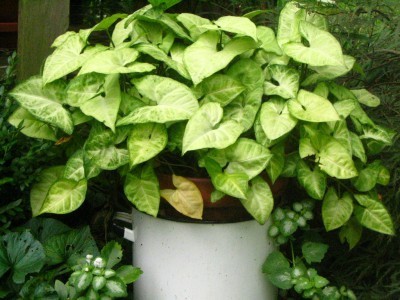






There’s nothing wrong with giving your houseplants some fresh air during springtime after they’ve been cooped up all winter; in fact, houseplants actually appreciate this. However, when you take a plant from its indoor environment and place it in the outside elements all at once, the plant can very easily become stressed as a result of shock. Before you rush your houseplants to the great outdoors, they need to be gradually acclimated to their new environment. Acclimating houseplants to outdoor conditions is the best way to lessen the amount of shock and achieve successful adjustment to this new environment.
Light is one of the biggest factors contributing to plant shock. In fact, the intensity of sunlight outdoors is far greater than that found within the home. Although most houseplants require sufficient amounts of light, it is difficult for them to adjust from one extreme to another without taking proper steps beforehand.
In order to make this transfer more successful and with the least amount of plant stress, you should not place any houseplant in direct sunlight outdoors. Instead, seek out a nicely shaded area, perhaps your patio or under a tree, and allow your plants to take in the fresh air for a few hours each day. Then gradually move them to an area allowing a little sunshine and slowly increase their time outdoors, even leaving them out all day. After a couple weeks, the houseplants should be well adapted to their outdoor setting to remain throughout summer.
Once your houseplants have been fully acclimated outdoors, there are still a few considerations to bear in mind. First of all, during the warmer months ahead, houseplants will be using more water and nutrients. This means you’ll have to increase their watering and feeding intervals. However, you should be careful not to over do it. Too much water or fertilizer can be just as bad as too little.
You may also be dealing with pests. Inside, houseplants are not typically bothered by insects or other pests so much as they are outdoors. Become familiar with some of the more common insects pests so you’ll be better prepared at fighting them off, if it comes down to that.
Weather is another factor that can adversely affect houseplants that have been moved outdoors. For instance, wind can be a huge stressor for houseplants as they are not accustomed to it while indoors. Wind can easily dry plants out or, if strong enough, even toss them about and knock them over. To prevent any problems associated with wind, place your houseplants in a well-protected area, such as near a wall. Although light rain is often a godsend to houseplants, downpours can have devastating effects on them, beating their leaves, knocking dirt out from their containers, and drowning their roots.
Outside temperatures can vary greatly from indoors as well, and since the majority of houseplants originate from tropical-like regions, they cannot tolerate cold temperatures or anything below 55 degrees F., especially at night. Therefore, you should always bring houseplants indoors whenever threatening weather or cooler temperatures is imminent. And then, of course, with the onset of winter, you’ll have to acclimate them back indoors.
Houseplants enjoy the fresh, warm air of spring after a long dreary winter. They can even benefit from it; however, in order to prevent shocking them to death, make the move outdoors a gradual one. In the end, your houseplants will thank you for it with healthy, vigorous growth and beautiful blooms.
Copyright © www.100flowers.win Botanic Garden All Rights Reserved